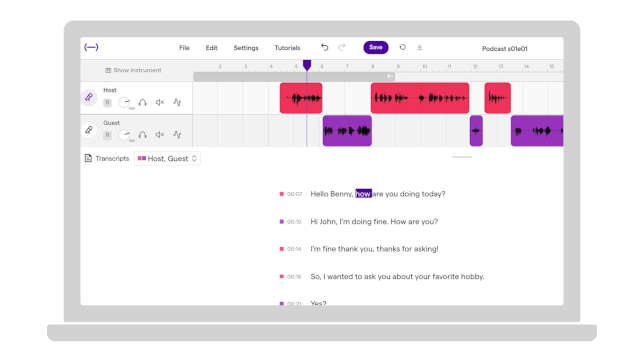Podcasting Software Adds Education Functionality
- By Dian Schaffhauser
- 05/29/19

An online service for audio recording has released an education version that allows users — instructors and students — to co-create podcasts from different locations and includes functionality for use by younger learners. Soundtrap, a company owned by digital music company Spotify, will release a new education edition of Soundtrap for Storytellers podcast creation tool in June.
Soundtrap for Storytellers provides the functions podcasters most often need to create their recordings: editing, transcribing, remote interviewing and adding sound effects. The education edition is intended to reduce the time and effort needed to make podcasts sound professional.

Among the new features are these:
-
An editing studio that allows students to transcribe and edit the spoken-word audio file as they would a text document, eliminating the need to listen to the podcast over and over again. Transcripts can be generated by clicking a button, allowing for differentiated instruction and letting learners read their spoken words.
-
The ability to insert extras, enabling students to add personal jingles and go through an entire audio production process using Soundtrap's built-in instruments and loops. Students will have access to 1,100-plus "classroom-appropriate" sounds from freesound.org, which can be used to add atmospheric sound to the podcast project and punctuate stories.
-
While the education version of the software complies with the Children's Online Privacy Protection Act (COPPA), regarding the collection and use of personal information about young users, older students, to whom COPPA doesn't apply, can invite others to join or co-create podcasts remotely, without requiring them to have their own Soundtrap subscriptions. They can also upload podcasts and English language transcripts directly to Spotify.
"This educational tool helps teachers differentiate instruction for students of all abilities within one classroom, giving students a compelling way to channel their thoughts and perspectives," said Soundtrap CEO, Per Emanuelsson, in a statement. "While students will be utterly engaged, teachers get an inspiring vehicle for meeting core curriculum requirements."
The full set of services can be accessed through the desktop version; a "select set" of recording and editing features is available on iOS and Android. The company has also posted half a dozen lesson plans for free download, such as a lesson for learning about fractions with music notes and another to learn a new language by creating a podcast.
The annual subscription pricing for Soundtrap for Education will be $249 for up to 50 users.
About the Author
Dian Schaffhauser is a former senior contributing editor for 1105 Media's education publications THE Journal, Campus Technology and Spaces4Learning.